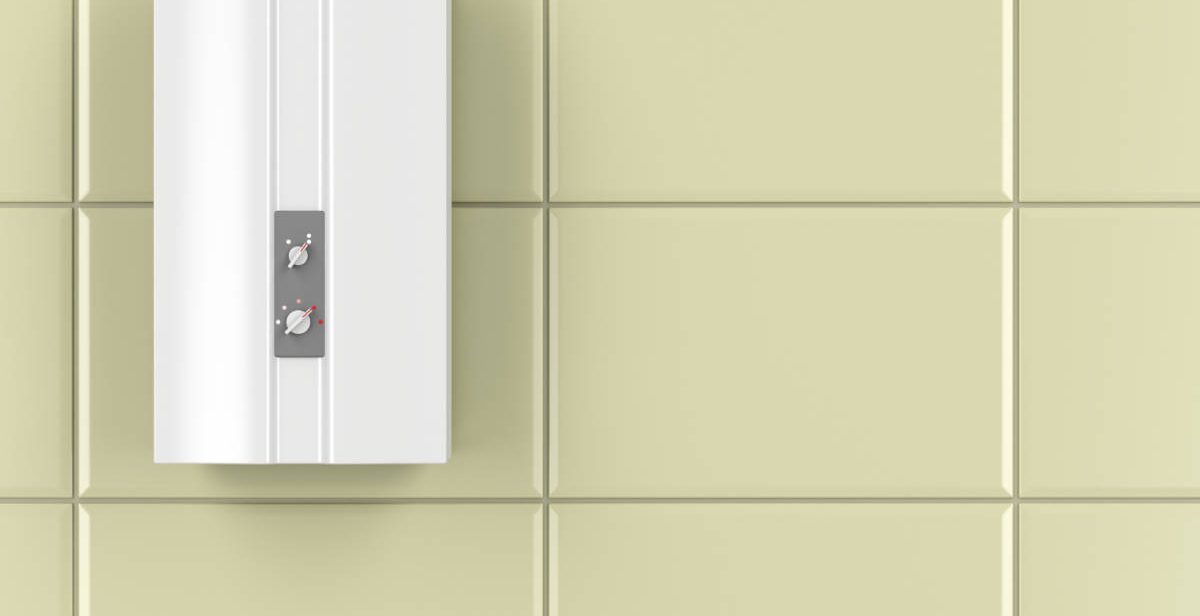Choosing the right boiler for your home will save you thousands of dollars and reduce pollution to boot. We take turning a tap to run a hot bath for granted. And when the monthly gas bill arrives we often wonder how it was possible to burn through so much gas. Heating water whether for keeping our home warm or to wash our hands is expensive business. Tankless water heaters claim to be more efficient than conventional boilers saving you money by reducing energy use
Boilers vs tankless water heaters
Traditional boilers heat water slowly and store it until it is used. During this time it will need additional heat to keep the water at the desired temperature so it’s always ready for use. This means your boiler is burning through energy even when none of the water is being used.
Tankless water heaters heat water only when it is needed for showers, washing machines, dishwashers or faucets. Since no heat is required to maintain water at a hot temperature, they use less gas or electricity to operate.
Is a tankless water heater the same as a Combi-Boiler?
No. A combination-boiler will heat your home as well as provide hot water on demand. A Tankless Water Heater will not heat your home, despite the name. It has one job – to provide hot water when it’s needed.
Is a tankless water heater the same as an instant hot water faucet?
Similar but not the same. The market for instant hot water faucets has been steadily growing. For tea lovers, it’s a vital accessory to make a hot drink on demand. A tankless water heater works on similar principles but supplies far more water.
How much do tankless water heaters cost?
Tankless water heaters are considerably more expensive compared to traditional boilers.
According to Home Depot, the average cost to install a standard water heater in the United States is $1,500 (2020 prices).
The average up-front cost of a tankless water heater installation is $3,500.
However, the lifetime cost of a tankless water heater will be far lower than a traditional boiler. They last significantly longer than tanked boilers – at least 20 years, compared to 10-15 years for traditional boilers.
And the energy cost will be lower too.
How much can I save on gas/electricity bills?
According to the United States Department of Energy, the average American household spends $400 to $600 each year on heating water. For gas water heaters, going tankless saves an average of $108 annually. The tankless savings for electric water heaters is much smaller, only $44 per year.
What size tankless water heater do I need?
With standard water heaters, you select a tank size that will provide enough hot water for a decent period of time.
With tankless water heaters, you need to determine how many gallons per minute (gpm) you will require during your peak usage – for example in the morning when you are all getting ready to go to work and school.
Start by looking at each fixture that might need hot water.
Here are some typical flow rates:
- Shower with modern showerhead: 2 gpm
- Shower with old showerhead: 5 gpm
- Dishwasher: 2.5 gpm
- High efficiency dishwasher: 1 gpm
- Faucet: 1 gpm
- Washing machine: 2.5 gpm
- High efficiency washing machine: 1 gpm
Now you need to determine what the maximum amount of water that you will use at any given time.
Let’s say that you only use cold water in your washing machine, and turn on the dishwasher before you go to bed. Perhaps your biggest hot water usage is in the morning when there might be two showers running. This would be 4 gallons per minute.
Note that efficient water usage is very important. With old showerheads you would need a whopping 10 gpm.
Read more: https://www.opoh.co/how-to-save-water-at-home/
The next item to look at is the required temperature rise. 70℉ is a good estimate for most people. The groundwater temperature is around 50℉ and it’s raised to around 120℉ before usage.
Therefore you need a heater that can provide 4 gpm with a 70℉ temperature rise.
When selecting a tankless water heater, you need to look closely at the specs. I found a tankless heater online that was sold by a reputable retailer. It was listed as 6 gpm in the headline, but when I looked at the specifications, here’s what I found:
- 7.03 gpm at 35 degree temperature rise
- 5.46 gpm at 45 degree temperature rise
- 4.47 gpm at 55 degree temperature rise
- 3.78 gpm at 65 degree temperature rise
Can I retrofit my house with a tankless water heater?
It is possible, but it may be difficult and expensive. These heaters require a lot of power since they have to heat the water very quickly. For gas users, you may need new piping and ventilation. Likewise, electric tankless water heaters may require new wiring.
OPOH Recommends
If you are ready to build a new house, talk to the contractor about a tankless water heater, especially if it will have gas available. It will cost more upfront, but last longer and use less fuel. You will be helping yourself and the planet. Also, look for appliances and fixtures that use less water. You will save on water and the energy to heat it, saving you a lot of money in the process.

